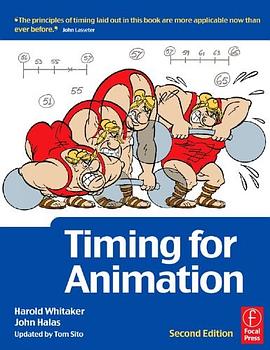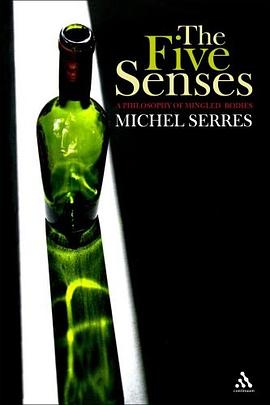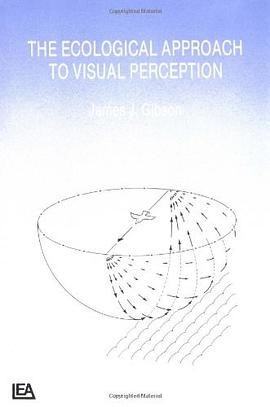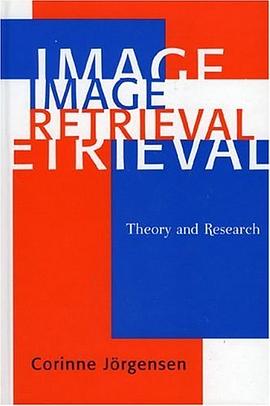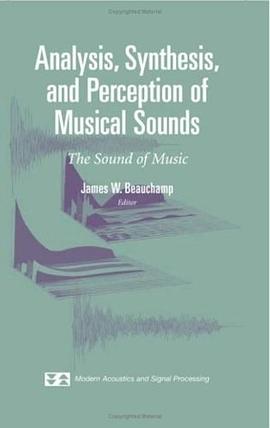
Art and Visual Perception pdf epub mobi txt 电子书 下载 2025
- 艺术
- 心理学
- 设计
- Visual/Art
- 文化
- 思维
- 艺术史
- theory:criticism
- 艺术
- 视觉
- 感知
- 美学
- 设计
- 心理学
- 认知
- 图像
- 色彩
- 空间

具体描述
Since its publication fifty years ago, this work has established itself as a classic. It casts the visual process in psychological terms and describes the creative way one's eye organizes visual material according to specific psychological premises. In 1974 this book was revised and expanded, and since then it has continued to burnish Rudolf Arnheim's reputation as a groundbreaking theoretician in the fields of art and psychology.
作者简介
Rudolf Arnheim is Professor Emeritus of the Psychology of Art at Harvard University. His books include Film as Art (California, 1957), Visual Thinking (1969), The Dynamics of Architectural Form (California, 1977), The Split and the Structure: Twenty-eight Essays (California, 1996).
目录信息
Copyright 1954, 1974, by the Regents of the University of Califonia
ISBN: 0-520-24383-8
Contents
Preface to the new version
Introduction
I. Balance
The hidder structure of a square, 10
What are perceptual forces? 16
Two disks in a square, 18
Psychological and physical balance, 19
Why balance? 20
Top and bottom, 30
Right and left, 33
balance and the human mind, 36
Madame Cezanne in a yellow chair, 37
II. Shape
Vision as avtive exploration, 42
Grasping the wssentials, 43
Perceptual concepts, 44
What is shape? 47
The influence of the past, 48
Seeing shape, 51
Simplicity, 55
Simplification demonstrated, 63
Leveling and sharpening, 66
A ehole maintains itself, 67
Subdivision, 69
Why the eyes often tell the truth, 73
Subdivision in the arts, 74
What is a part? 76
Similarity and difference, 79
Examples from art, 88
The structural skeleton, 92
III. Form
Orientation in space, 98
Projections, 103
Which aspect is best? 106
The Egyptian method, 112
Foreshortening, 116
Overlapping, 120
What good does overlapping do? 123
Interplay of plane and depth, 127
Competing aspects, 130
Realism and reality, 134
What looks lifelike? 136
Form as invention 139
Levels of abstraction, 144
La source, 152
Visual information, 156
IV. Growth
Why do children draw that way? 163
The intellectualistic theory, 164
They draw what they see, 167
Representational concepts, 169
Drawing as motion, 171
The primordial circle, 174
The law of differentiation, 179
Verticle and horizontal, 182
Obliqueness, 187
The fusion of parts, 191
Size, 195
The misnamed tadpoles, 197
Translation into two dimensions, 199
Educational consequences, 203
The birth of form in sculpture, 208
Sticks and slabs, 209
The cube and the round, 215
V. Space
Line and contour, 219
Contour rivalry, 223
Figure and gound, 227
Depth levels, 233
Application to painting, 234
Frames and windows, 239
Concavity in sculpture, 241
Why do we see depth? 245
Depth by overlapping, 248
Transparency, 253
Deformations create space, 269
Simple rather than truthful, 271
Gradients create depth, 275
Toward a convergence of space, 280
The two roots of central perspective, 283
Not a faithful projection, 285
Pyramidal space, 287
The symbolism of a focused world, 294
Centrality and infinity, 297
Playing with the rules, 298
VI. Light
The experience of light, 303
Relative brightness, 305
Illumination, 309
Light creates space, 311
Shadows, 315
Painting without lighting 320
The symbolism of light, 324
VII. Color
From light to color, 330
Shape and color, 332
How colors come about, 337
The generative primaries, 339
Addition and subtraction, 341
Generative complementaries, 342
A capricious medium, 344
The quest for harmony, 346
The elements of the scale, 350
Syntax of combinations, 353
The fundamental complementaries, 357
Interaction of color, 362
matisse and El Greco, 364
Reactions to color, 368
Warm and cold, 369
VIII. Movement
Happenings and time, 372
Simultaneity and sequence, 375
When do we see motion? 378
Direction, 382
The revelations of speed, 384
Stroboscopic movement, 387
Some problems of film editing, 392
Visible motor forces, 394
A scale of complexity, 398.
The body as instrument, 403
The kinesthetic body image, 406
IX. Dynamics
Simplicity is not enough, 410
Dynamics and its traditional interpretations, 412
A diagram of forces, 416
Experiments on directed tension, 419
Immobile motion, 423
The dynamics of obliqueness, 424
Tension in deformation, 428
Dynamic composition, 432
Stroboscopic effects, 434
How does dynamics come about? 437
Examples from art, 440
X. Expression
Traditional theories, 445
Expression embedded in structure, 449
The priority of expression, 454
Symbolism in art, 457
Notes 463
Bibliography 487
Index 503
· · · · · · (收起)
读后感
这本书的作者还是比较有才的,涉猎面很广,还是有深度的。这本书看了一部分了,有些吃力,怀疑是不是翻译的不好,我想应该有翻译的原因吧,再者这本书有些东西费了一张纸来说最后告诉你的却是一个十分简单的道理,而且这道理我们都明白,我有点不能接受。
评分这当然是本好书,不过是对于原作的评价。我真的要质疑一下出版社的态度——纸质低劣也就罢了,起码的较对有没有?错字人名错误就不说了,图也有错误而且印的非常粗糙,后半本阐释三度空间的视觉理论的时候作者用了很多相当于立体几何的图。图上的标记一团糊abcdefg完全分不出全...
评分读这本书需要一定的基础,看了一半发现了多处错误 读的过程中一直感觉胸闷。但总的来说还是有收获的。 当我打电话给四川人民出版社 想纠正错误时 对方竟然推卸责任,竟然把我推到4个不同的部门,不得不说 四川人民出版社的不行确实是正确的
评分testtesttesttesttesttesttesttesttesttesttesttesttesttesttesttesttesttesttesttesttesttesttesttesttesttesttesttesttesttesttesttesttesttesttesttesttesttesttesttesttesttesttesttesttesttesttesttesttesttesttesttesttesttesttesttesttesttesttesttesttesttesttesttestt...
评分书是真心不错!但翻译是不是应该要尊重原作者的基础,我承认翻译这类理论,有时必须要加入翻译人自己的理解,才能表达。但是不得不说,这也损失了原著大量信息和内涵。如原著在第八章中有一个举例用的是“毛毛虫”,翻译改成“拖车”。当然这个改变无伤大雅,也基本不会太影响...
用户评价
恰当运用心理学分析视觉感知,层层递进,强烈推荐。十个章节形成一套完整的理论系统,保罗万象,有点视觉系的哲学感。除了色彩那一章切入点不太能理解。语言论述也是很高明,跟其他艺术形式、即人类审美系统相通,虽然作者自己都强调文字无法代替视觉感知,但他已经做到最好了。一直在找认知与设计的联系,看完如同在山林里懵逼的人突然见到了阳光。
评分Insightful when analyzing how overlapping works in simple figure and depth.
评分some stand the test of time.everybody learning art,cognitive science,aesthetic values and art history should read it without hesitation.
评分interplay of object and subject
评分恰当运用心理学分析视觉感知,层层递进,强烈推荐。十个章节形成一套完整的理论系统,保罗万象,有点视觉系的哲学感。除了色彩那一章切入点不太能理解。语言论述也是很高明,跟其他艺术形式、即人类审美系统相通,虽然作者自己都强调文字无法代替视觉感知,但他已经做到最好了。一直在找认知与设计的联系,看完如同在山林里懵逼的人突然见到了阳光。
相关图书
本站所有内容均为互联网搜索引擎提供的公开搜索信息,本站不存储任何数据与内容,任何内容与数据均与本站无关,如有需要请联系相关搜索引擎包括但不限于百度,google,bing,sogou 等
© 2025 book.quotespace.org All Rights Reserved. 小美书屋 版权所有



